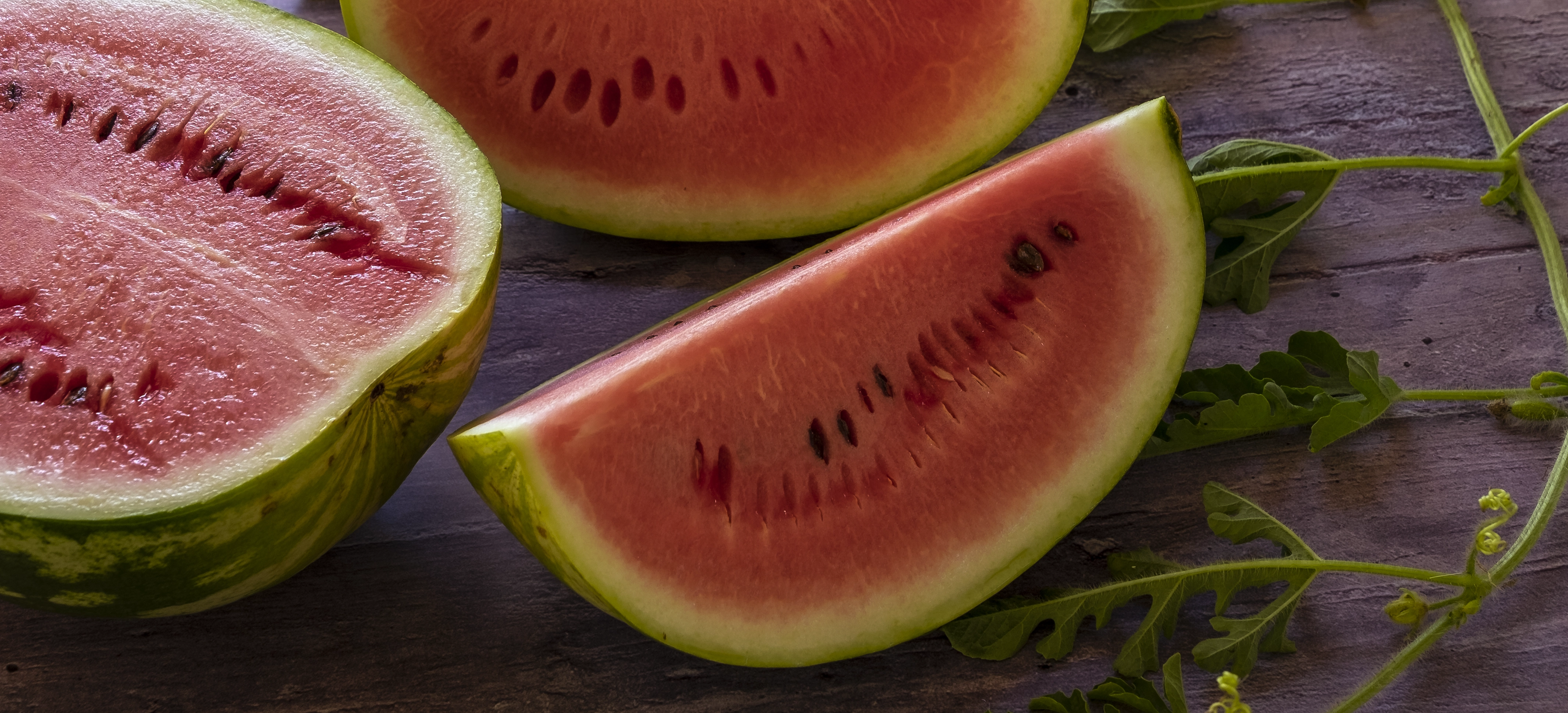Pickled Watermelon Rind
- Pickles, Chutney, Relish & Sauces
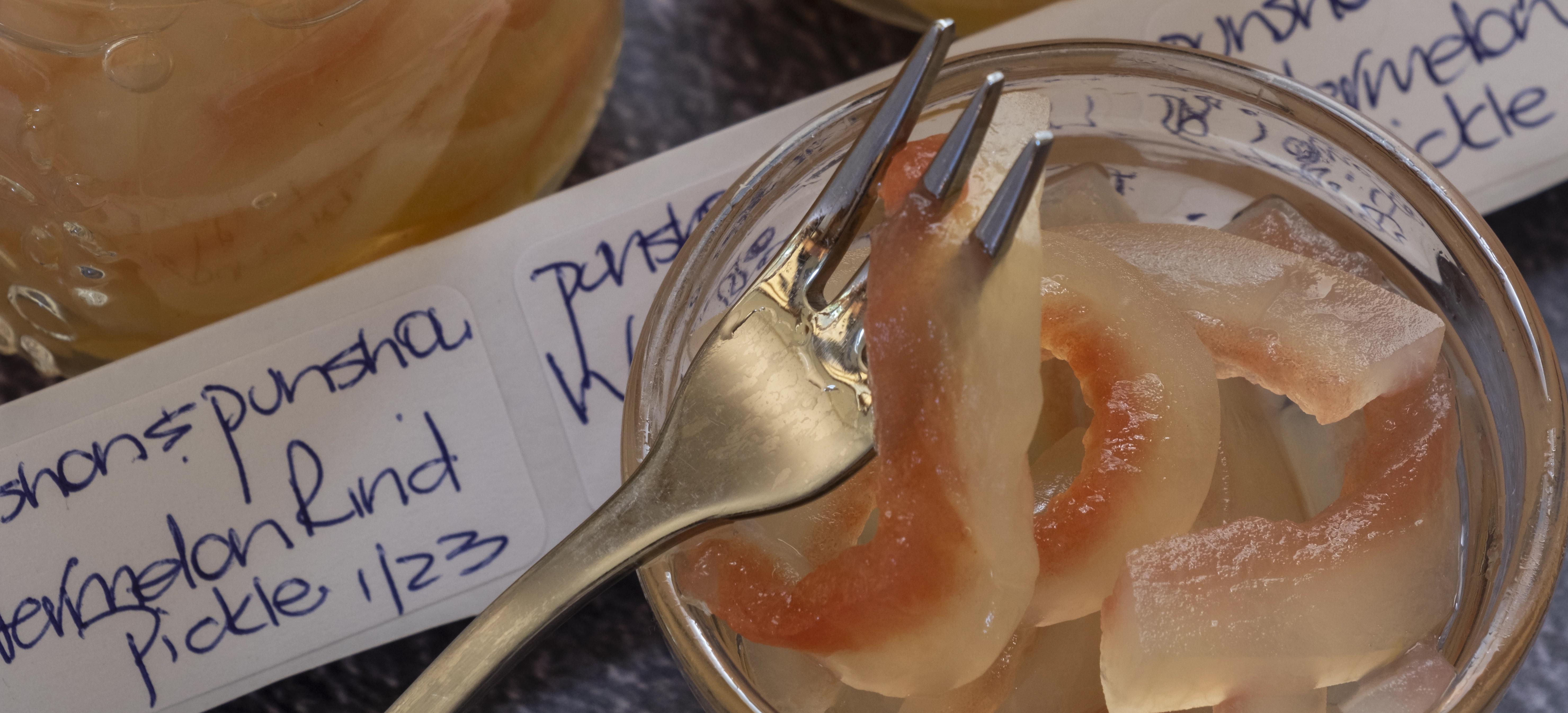
In summer cold juicy sweet watermelon is a great way to rehydrate and beat the heat. But what to do with all that left-over rind? There’s the perfect waste hack - pickle it. Pickled watermelon rind is the perfect pairing for your next cheese or anti pasta platter. Make a couple of batches over watermelon season and spread this quirky pickle around to family and friends. The hot pickling technique makes it a cinch to make. Enjoy a new taste of summer!
- Preparation Time:
- 20 minutes
- Cooking Time:
- 30 minutes
- Quantity:
- 3 x150 ml jars
PREPARATION
Sterilise sealable good quality glass jars with sealable lids.
Lids to be lined with protective coating.
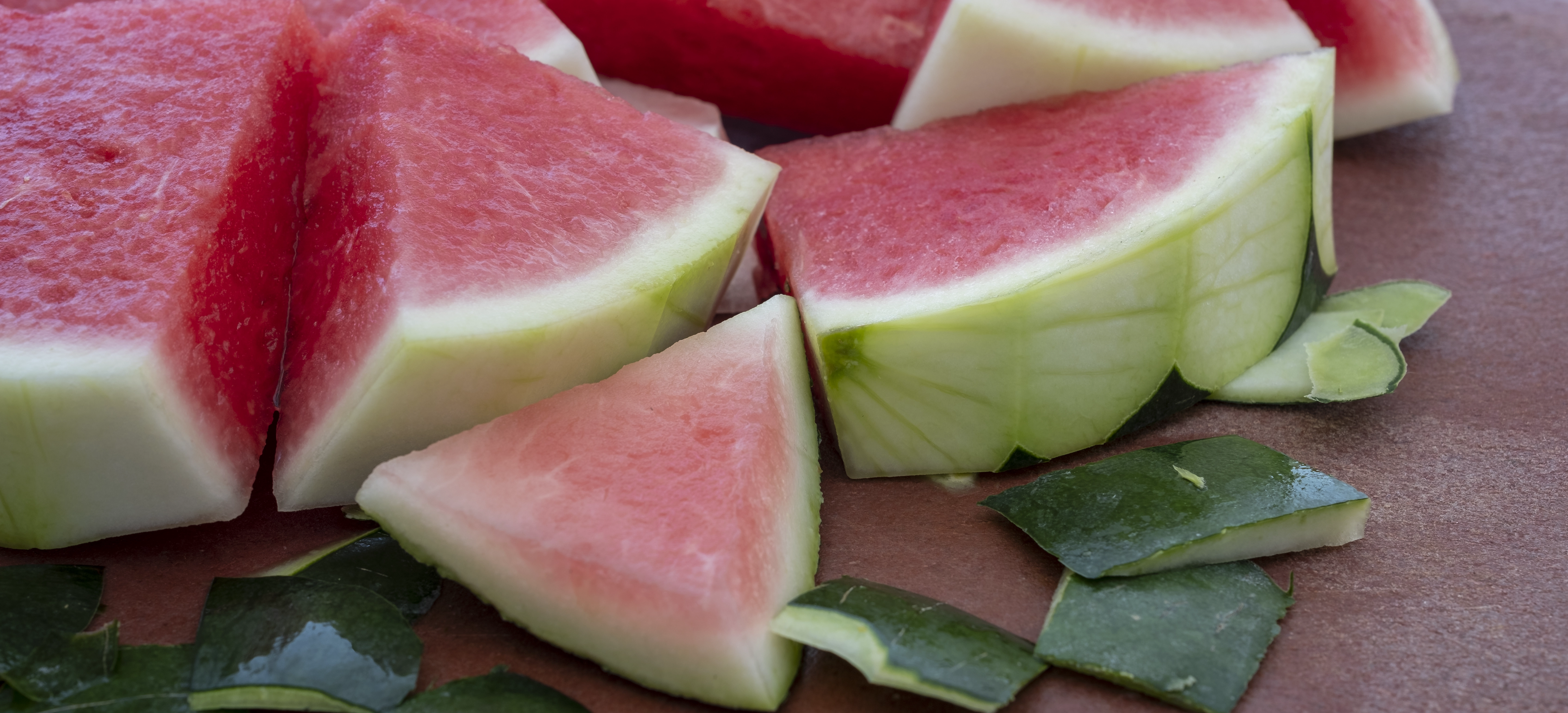
INGREDIENTS
- 375g
- Watermelon rind, prepared
- 15g
- Salt
- 375 ml
- Water
- 100 ml
- White wine vinegar
- 135g
- White sugar
- 3
- Cloves, whole
- 2
- Allspice berries, whole
- 4
- Cardamon seeds, whole
- 2-3 cm
- Cinnamon stick
- 2 cm
- Ginger, fresh
- 2
- Lemon rind, pieces
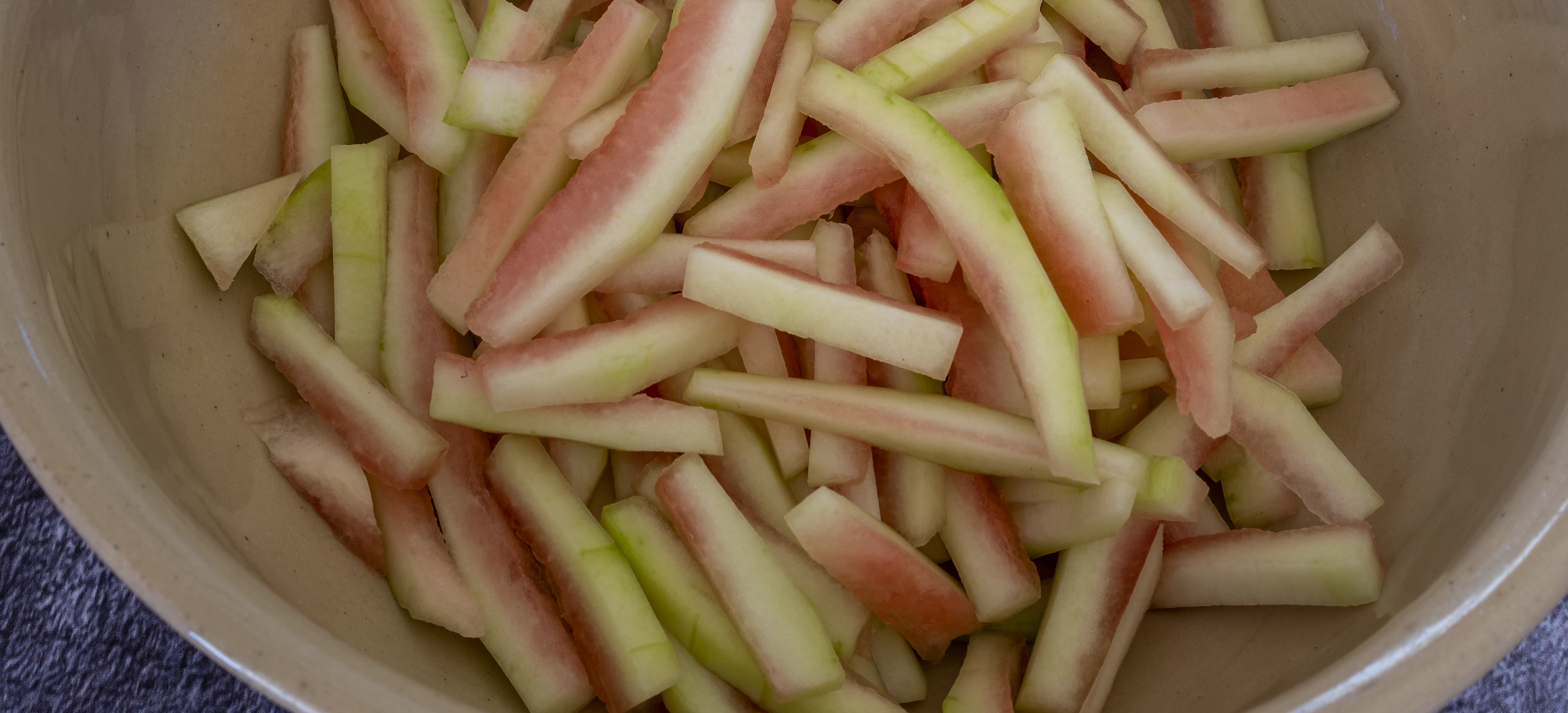
METHOD
Making small batches works best as a quarter of a medium watermelon will yield approximately 375 grams of prepared rind.
Start with preparing the watermelon rind. Cut the watermelon into thick slices, then remove the dark green outside skin being careful to remove as little of the white flesh as possible. Then cut away the pink flesh leaving a blush of pink on the white flesh. Slice the rind into thin slices and place into a stainless-steel container.
Dissolve the salt in the water. Pour over the prepared watermelon rind, cover, and leave in a cool place overnight or 6 hours minimum. Discard the hard green rind and use the pink watermelon flesh as a refreshing fruit snack, in a salad or use in any of your watermelon recipes.
The next day, drain the watermelon rind and rinse well under cold water to remove the salt. Allow to drain. Place in a stainless stain saucepan, cover with water and simmer gently until just cooked. Do not overcook at this point as it will have a second cook in the next stage.
Peel the fresh ginger, slice thinly and cut into thin strips.
Place the sugar, vinegar, lemon rind and spices in a stainless-steel saucepan, bring to the boil, stirring occasionally to dissolve the sugar, then simmer for 10 minutes. Remove from the heat and strain to remove the spices. Add the drained rind, and allow to stand for at least 2 hours. Discard the spices.
Slowly bring the spiced vinegar and rind mixture back to the boil. Then simmer gently for another 10 minutes, or until the rind is soft and has a translucent appearance.
Transfer the cooked rind to dry warm sterilised jars. Do not over fill the jars at this point.
Use a funnel to cover the pickle with the vinegar solution and fill to approximately 2.5cm (1 inch) from the top of the bottle. Remove any air bubbles and seal while hot. The vinegar must completely cover the fruit.
Label, and store in a cool dark place in the kitchen or pantry.
-
Allow the pickles to mature for at least 4 weeks before eating.
After opening store in the refrigerator and use within 2 months.
NOTES
- Choose ripe clean watermelon. Wash and dry the outside rind to remove any dirt or garden/shop residue. Although the outside rind will not be used, it will keep your chopping board and preparation area clean.
- Leaving a pink blush on the white flesh will provide an attractive appearance to the final pickle.
- Simmering then standing the spices in the vinegar will draw out their aromatic and fragrant flavours to create a sweet, spiced pickling liquid.
- Good quality jars should be used in all preserving, particularly when they are processed in a hot water bath. Thin jars often cannot withstand the temperatures and may crack either in the bath or on and or after removal. Avoid the disappointment and invest in some good jars from a homewares or preserves outlet. Select jars that have non-reactive lids as the vinegar solution can cause the lids to rust over time.
- Allspice (Pimenta diocia). Also known as Jamaican pepper, clove pepper, pimento. Allspice comes from an evergreen tree in the myrtle family. Twigs bearing the berries are picked in summer when the berries are mature but still green. Berries are sweated in containers to release their active ingredients then dried. Whole berries retain their flavour well and will keep almost indefinitely sealed in a cool dark place. They have a rough surface which contains tiny oil glands and most of the flavour is contained in this wrinkled husk, not the seeds. Allspice powder quickly loses potency. Best to buy in small quantities and keep sealed in cool dark place for up to 6 months. Suits both sweet and savoury dishes.
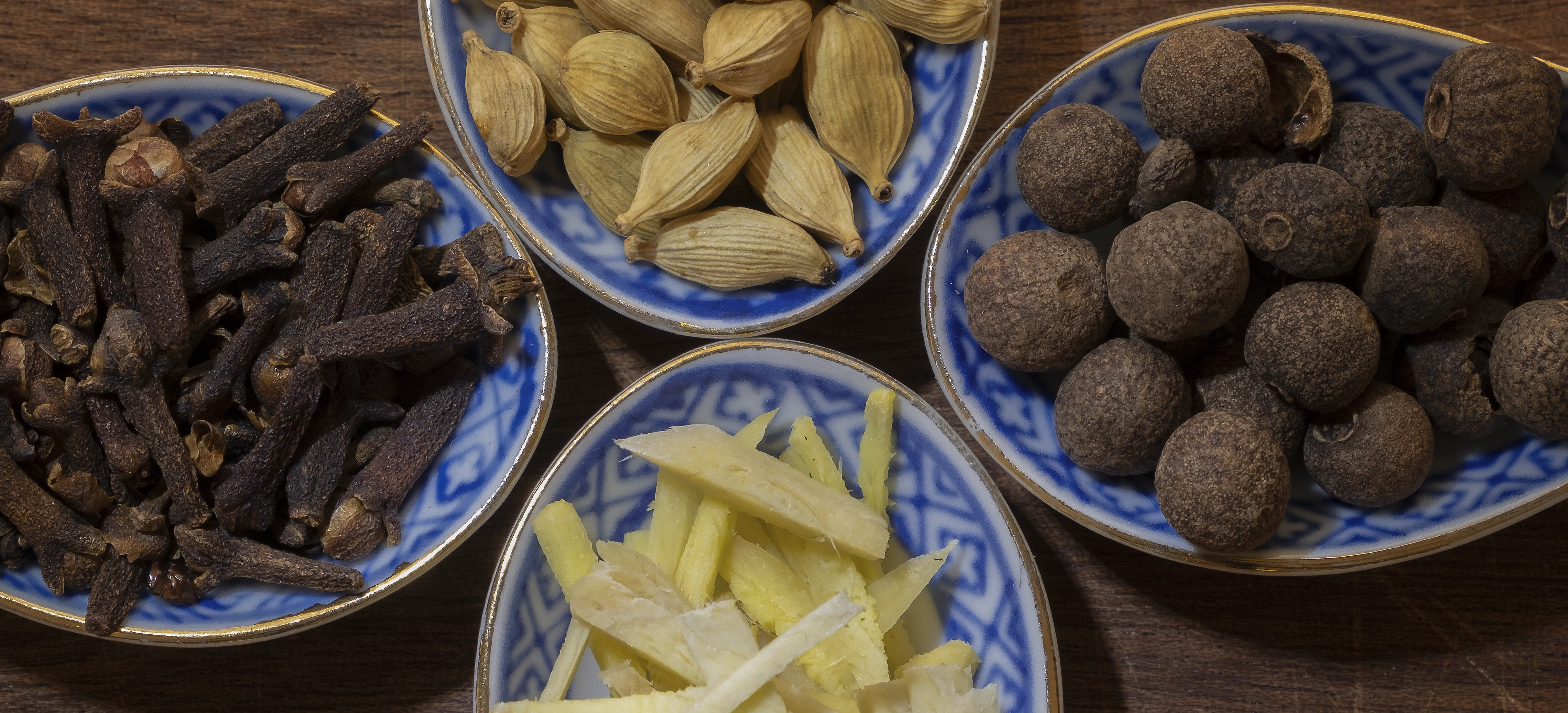
- Cinnamon (Cinnamomum verum). The inner layers of the cinnamon bark are rolled by hand to make “quills’ and dried in the sun. Cinnamon sticks keep their flavours for up to a year. Keep in an airtight containers and store in a cool dark place in the pantry or kitchen. The lighter brown, thinner more fragile sticks are higher quality. It is aromatic and while not sweet in itself, it enhances the perception of sweetness in other ingredients. Cinnamaldehyde is the main flavour compound and is sensed by the temperature sensors on the tongue, giving cinnamon a warming quality
- Clove (Syzygium aronaticum).Cloves are the dried unopened flower buds of a tropical evergreen plant. Borne in a cluster of 10-15, they are picked when full size, still green but just on the verge of turning pink. The flavour and aroma is warm, pungent, camphor-like and faintly peppery. Look for cloves that are plump, not shrivelled or broken and where the majority retain their rounded tops.
- Cardamom (Elettaria cardamomum). Also known as small cardamom, green cardamom, true cardamom, queen of spices. The whole pods, containing 15-20 seeds, are used predominantly. The seeds ripen from white to reddish-brown or black. Good-quality seeds should be black and slightly sticky. Pods are papery, normally yellowish green. White pods have been bleached for aesthetic reasons and have a weakened aroma. Pods are generally graded by width with the fattest ones containing the most seeds. Tropical ginger perennial in the ginger family. Its tall shoots develop from underground stems – rhizomes.
